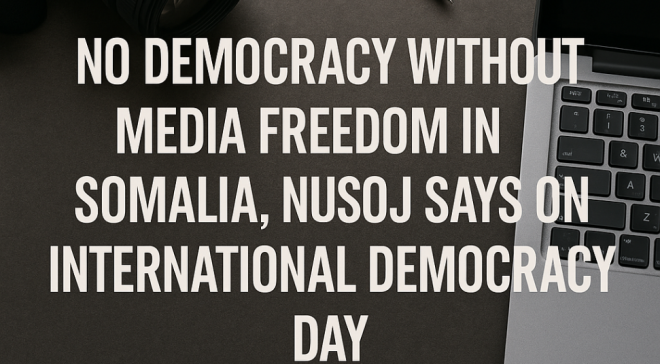Parts of Somalia hit by the driest season in 40 years as climate-fueled drought worsens
Nearly 90% of Somalia is now in a severe drought, following three consecutive failed rain seasons. Some areas facing their driest season in 40 years. Nearly 3.5 million people are already acutely food insecure and millions more are now at risk of going hungry by the beginning of next year.
With no respite in sight, pastoralists’ chance for planting next season’s crops or finding grazing land for livestock is vanishing.
“People in Jubaland in the South, Gedo, Mudug, Nuugal, Bari, Toghdheer, and Sool have been the hardest hit. Some have already experienced intense drought for more than a year and have had to watch their livestock, crops, and savings perish in front of their eyes. They urgently need lifesaving water, food, and cash,” said Amjad Ali, Oxfam Country Director in Somalia.
Many farmers and pastoralists have told Oxfam harrowing stories of how the drought has devastated their lives. Maryan Abdullahi, a woman farmer living at the outskirt of Dudumaale village said:
“We did not receive rain for two seasons. Our livestock and our own lives are in danger. In Dudumaale we use to fetch water from berkeds [traditional Somali water cisterns], but all berkeds are empty right now. The drum of water costs $4 which we cannot afford.“
Most natural water sources have dried up, pushing up the price of potable water. The price of a 200-liter water drum jumped above the five-year average by 45 percent in Gaalkacyo, Mudug Region, 70 percent in Jilib, Middle at Juba Region, and 172 percent in Garowe, Nugaal Region, last October.
Persistent climate-fueled drought, compounded by ongoing conflict, locusts and COVID-19, has fueled hunger in Somalia and will leave 7.7 million people - nearly half the population - in urgent need of humanitarian assistance by 2022. This is a 30% rise since 2021. Somalia already ranks highest in the world Global Hunger Index with over half its population suffering from extremely alarming levels of hunger and malnutrition.
Most natural water sources have dried up, pushing up the price of potable water. The price of a 200-liter water drum jumped above the five-year average by 45 percent in Gaalkacyo, Mudug Region, 70 percent in Jilib, Middle at Juba Region, and 172 percent in Garowe, Nugaal Region, last October.
Persistent climate-fueled drought, compounded by ongoing conflict, locusts, and COVID-19, has fueled hunger in Somalia and will leave 7.7 million people - nearly half the population - in urgent need of humanitarian assistance by 2022. This is a 30% rise since 2021. Somalia already ranks highest in the world Global Hunger Index with over half its population suffering from extremely alarming levels of hunger and malnutrition.
Khadra Yusuf Saleban, a 48-year-old displaced woman from Bali-docol camp said: “I have many fears about [having no] water and food for my children and my parents. Our livestock is the backbone of our life. I lost it all in the last drought. Without water and food, there will be death to our livestock and to our families, particularly children and elderly.”
Oxfam and partners have already reached nearly 185,000 of the most vulnerable people across the country, with clean water and sanitation, food, and rehabilitation programs.
Aydrus Daar, Executive Director of WASDA, one of Oxfam’s local partner organizations, said:
“I have been involved in droughts since 1991 and I have never seen a drought that has impacted people as badly as has this one. Many pastoralists have lost 100% of their livestock. This has never occurred in living history. Our biggest concern is an imminent famine.”
“In the 2011 drought crisis, an estimated 50,000–100,000 people lost their lives. Despite the warnings, the international humanitarian system did too little too late. We must make sure that history does not repeat itself. We must act now. More than a third of the humanitarian appeal for Somalia this year is unfounded,” said Amjad Ali, Country Director of Oxfam in Somalia.
To help prevent a worsening catastrophe, Oxfam and partners aim to double the number of people reached, providing the most vulnerable in South Central Somalia, Somaliland, and Puntland, with lifesaving water, food, and cash in the next six months. Oxfam also aims to help communities rebuild their lives and adapt to the cyclical expected climate disasters.
Oxfam urgently needs $15 million to help boost its humanitarian response in Somalia and save lives.








